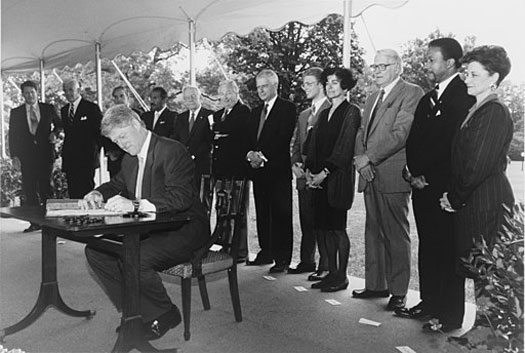
August 8, 2017; Slate
On Monday, the Department of Justice dropped its objections to Ohio’s voter purge procedures, which disproportionally affect Democratic voters, arguing that it is legal for a state to purge voter files of voters who vote infrequently.
According to Slate, while many states regularly clean up their voter files, Ohio “purges voters from the rolls relentlessly, removing around 2 million people between 2011 and 2016—with voters in Democratic-leaning neighborhoods twice as likely to be purged as those in Republican-leaning neighborhoods…Up to 1.2 million of those 2 million purged voters may have been removed for infrequent voting.”
Civil rights groups had sued Ohio, and the 6th U.S. Circuit Court of Appeals “ruled that the state’s purging procedures violated the National Voter Registration Act (NVRA) of 1993.” As a result, 7,500 Ohioans were able to cast ballots in the 2016 election.
According to the NVRA, “voter-roll upkeep ‘shall not result in the removal of the name of any person from the official list of voters registered to vote in an election for Federal office by reason of the person’s failure to vote.’”
Ohio’s voter purges are at the center of Supreme Court case Husted v. A. Philip Randolph Institute, which will be heard next term. Slate recounted its road there.
In the lower courts, the Justice Department sided against Ohio, asserting that the state’s purges ran afoul of the NVRA. The agency’s reasoning was simple: Unlike most states, Ohio targets voters for removal when they do not cast a ballot for two years. It sends these individuals a confirmation notice demanding they confirm or update their addresses. If a voter does not respond to the notice and does not vote in the next four years, her registration is cancelled.
Sign up for our free newsletters
Subscribe to NPQ's newsletters to have our top stories delivered directly to your inbox.
By signing up, you agree to our privacy policy and terms of use, and to receive messages from NPQ and our partners.
The issue here is that the NVRA does not allow states to start the purging process simply because a voter hasn’t cast a ballot in some period of time. Instead, the NVRA requires some initial indication that a voter has moved before the removal process can begin. The statute itself gives one example: “change-of-address information supplied by the Postal Service.” In guidance issued in 2010, the Justice Department provided others, including election materials that are returned nondeliverable.
The 6th Circuit agreed that Ohio could not commence the removal of a voter from the rolls in the absence of reliable evidence that he has moved. Ohio appealed, and in May the Supreme Court agreed to hear the case.
The DOJ filed a brief Monday announcing “that after the change in administrations, the department reconsidered this question.”
Slate reported that career attorneys in the at the DOJ are not signing on to this and other recent agency briefs that advance a campaign against affirmative action by political appointees. It called the brief an attack on the NVRA designed to facilitate voter purging, noting that the DOJ “sent an ominous letter to 44 states suggesting that the NVRA requires them to purge their voter rolls more vigorously.”
Further, Slate reminds us that Trump’s voter fraud commission is designed to unravel voter rights and claims of fraud are designed to “coerce states into purging their rolls.”
The Supreme Court decision on Husted v. A. Philip Randolph Institute may very well set the stage for political appointees to transform the NVRA into a “disenfranchisement device.” Slate concludes, “If the courts take their side, a crowning achievement of the voting rights movement could become a tool of voter suppression.”
How are nonprofits responding to this? Please write us and let us know.—Cyndi Suarez












